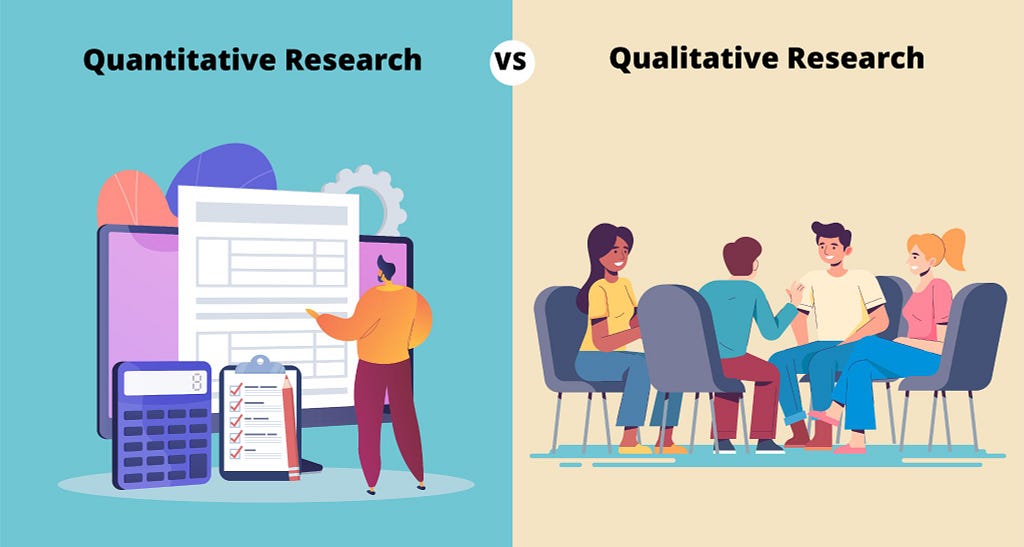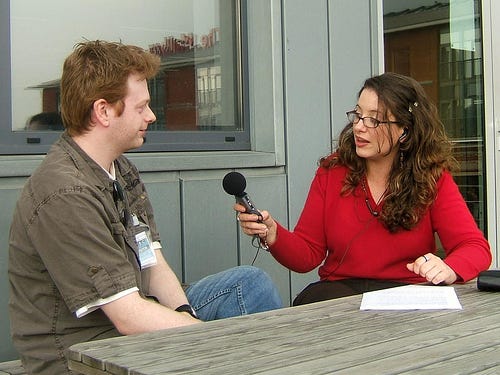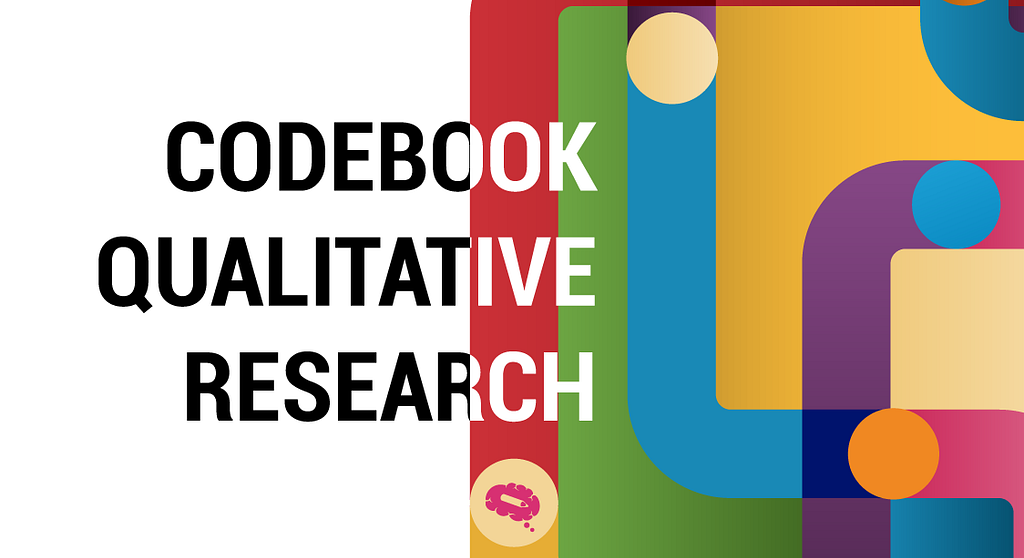
Introduction
In today’s fast-paced digital world, creating a product that not only functions well but also delights its users is a significant challenge. Achieving this requires a deep understanding of user experiences, motivations, and emotions. Qualitative user research is a powerful approach for uncovering these deeper insights, focusing on the “why” and “how” behind user behaviours.
Unlike quantitative research, which deals with numerical data and statistics, qualitative research delves into non-numerical insights to reveal the underlying reasons behind user actions. This method provides valuable context and depth that help designers and product developers better understand their users.
This article serves as a comprehensive guide to qualitative user research, walking you through its fundamentals, the importance of adopting a “usability attitude,” and the role of usability testing in enhancing product design. Whether you’re new to qualitative research or looking to refine your skills, this guide will equip you with the knowledge and tools needed to navigate each step with confidence.

1. Core Methods of Qualitative User Research
1.1 User interviews:
User interviews involve direct, one-on-one conversations between a researcher and a user. These interviews help in understanding the user’s thought process, pain points, and expectations. They typically include open-ended questions, allowing users to express their views freely.
- Objective: To gather in-depth insights by speaking directly with users.
- Process: Conduct one-on-one interviews where you ask users open-ended questions about their experiences, feelings, and thoughts related to a product or problem.
- Outcome: Provides rich, qualitative data that helps understand user motivations and challenges in detail.
1.2 Ethnographic studies:
Ethnographic studies involve observing users in their natural environment. This method helps researchers see how users interact with a product in real life, providing context that may not be apparent in controlled settings. It helps in identifying real-world issues and opportunities for improvement.
- Objective: To observe users in their natural environments.
- Process: Researchers immerse themselves in users’ real-world settings to observe how they interact with the product in everyday scenarios.
- Outcome: Offers contextual insights into how the product fits into users’ daily lives and highlights real-world usage patterns and challenges.
1.3 Focus groups:
Focus groups involve a moderated discussion among a group of users. This method is useful for collecting diverse opinions and ideas about a product. The discussion helps in identifying trends and common concerns among different users.
- Objective: To facilitate discussions among a group of users to explore their collective experiences and attitudes.
- Process: A moderator leads a group discussion focusing on users’ perceptions, opinions, and reactions to a product or concept.
- Outcome: Gathers a diverse set of perspectives, which can reveal common themes and differing views.
1.4 Usability testing:
Usability testing is a crucial method where users interact with a product while being observed by a researcher. This method helps in identifying usability issues, measuring how easily users can complete tasks, and understanding user satisfaction.
- Objective: To evaluate how easily users can navigate and use a product.
- Process: Users perform specific tasks while being observed. Researchers note any difficulties or confusion they encounter.
- Outcome: Provides actionable insights to improve the product’s design and functionality.

2. Adopting a Usability Attitude
A usability attitude is essential for designing products that genuinely meet users’ needs. This attitude emphasizes understanding and prioritizing user behaviour over personal or team preferences.
2.1 What does it mean to have a usability attitude?
- Prioritizing user experience: Focus on creating designs that enhance the user’s experience rather than just fulfilling technical requirements or following trends.
- Focus on observed behaviour: Pay attention to how users interact with the product. What challenges do they face? What aspects do they find intuitive? Use these observations to guide your design decisions.
- User-centric design: Ensure that the design process centres around the user’s needs, from initial research to final testing.
2.2 The benefits of a usability attitude:
- Increased user satisfaction: Products designed with a focus on usability are more intuitive and enjoyable to use.
- Reduced development costs: Identifying and addressing usability issues early can prevent costly redesigns and rework later.
- Higher conversion rates: Easier-to-use products often result in higher conversion rates as users are less likely to abandon tasks out of frustration.

3. Usability Testing: The Cornerstone of Qualitative Research
Usability testing is an essential part of qualitative research, focusing on observing users as they interact with a product. It is positioned towards the experimentation end of the qualitative research spectrum.
Why is usability testing so important?
- Uncovering hidden issues: Usability testing can reveal problems users may not articulate, such as confusing navigation or unclear instructions.
- Validating design decisions: It helps confirm whether your design solutions effectively address user problems and are intuitive to use.
- Iterative improvement: Insights from usability testing inform continuous refinement of the product, leading to a more user-friendly final version.

4. The Process of Conducting Usability Testing
Step 1: Define objectives
Clearly outline what you want to learn from the usability test. For example, are you testing a specific feature or the overall user experience?
Step 2: Recruit participants
Select participants who represent your target audience. Ensure diversity in terms of age, technical proficiency, and background to capture a wide range of feedback.
Step 3: Develop scenarios and tasks
Create realistic scenarios that users might encounter. For example, ask participants to complete tasks like searching for a product, adding it to the cart, and checking out.
Step 4: Conduct the test
Observe users as they perform tasks. Encourage them to think aloud, explaining their thought process and any difficulties they face. This helps in understanding their mental models and expectations.
Step 5: Analyze the results
Review notes and recordings to identify common issues. Look for patterns in user behaviour, such as recurring problems or confusing elements.
Step 6: Iterate and improve
Use the insights to refine the product. This may involve redesigning certain elements, simplifying navigation, or clarifying instructions. Conduct further tests to ensure issues are resolved.

5. Usability Testing in Practice: A Case Study
Case study: Improving conversion rates through usability testing
- Objective: Identify usability issues hindering purchases on an e-commerce platform.
- Participants: A diverse group of users, including frequent online shoppers and those less experienced.
- Tasks: Participants performed tasks such as searching for products, adding items to their cart, and completing the checkout process.
5.1 Findings:
- Confusing Navigation: Users struggled with a cluttered navigation menu.
- Complicated Checkout Process: The lengthy checkout process led to frustration and abandonment.
- Lack of Trust Signals: The absence of security indicators made users wary of payment security.
5.2 Improvements:
- Simplified Navigation: Streamlined the menu with clear labels and a more intuitive structure.
- Streamlined Checkout: Reduced the number of steps and pre-filled known information.
- Enhanced Trust Signals: Added trust badges and customer reviews.

6. Conducting Interviews and Observations
6.1 The value of qualitative user research
Qualitative research methods, such as interviews and observations, allow you to gather rich, detailed information about how users interact with your product. These methods help you understand the “why” behind user behaviours, which quantitative data alone cannot reveal. For instance, while analytics might show that users drop off at a particular point in a sign-up process, qualitative research can help you understand the reasons behind this behaviour, such as confusion over form fields or frustration with the interface.
6.2 Conducting semi-structured interviews
Semi-structured interviews are one of the most effective ways to gather qualitative data. In these interviews, you prepare a set of questions, but you remain flexible, allowing the conversation to flow naturally. This approach lets you explore unexpected topics that may arise during the discussion, providing a more nuanced understanding of the user’s experience.
How to conduct a semi-structured interview:
- Prepare your questions: Draft open-ended questions that encourage users to share their experiences and thoughts. These questions should be broad enough to allow for a wide range of responses, yet specific enough to keep the conversation focused on the topic at hand.
- Stay flexible: Be ready to follow up on interesting points that emerge during the conversation. This flexibility allows you to delve deeper into areas that are particularly relevant or revealing.
- Take notes: Record the interview or take detailed notes to ensure you capture all relevant information. If possible, use a combination of both methods, as recordings can help you revisit the conversation, while notes can capture your immediate thoughts and reactions.

6.3 Observing Users In Their Natural Habitat
Observation is another powerful qualitative research method. By watching users interact with your product in their natural environment, you can see how they use your product in real-life situations. This helps you identify pain points or areas where your product can be improved. For example, observing someone using a mobile app in a busy coffee shop can reveal challenges related to distractions, screen glare, or ease of use with one hand.
Tips for effective observation:
- Be unobtrusive: Try not to interfere with the user’s natural behaviour. Your presence should be as invisible as possible, so the user feels comfortable and behaves as they normally would.
- Focus on details: Pay attention to how users navigate your product, where they struggle, and what they enjoy. Look for both verbal and non-verbal cues, such as facial expressions, gestures, and body language.
- Record your findings: Document your observations for later analysis. Use a combination of notes, sketches, and, if appropriate, video recordings to capture the full context of the user’s interaction.
6.4 Conducting contextual inquiries
Contextual inquiries are a blend of interviews and observations, conducted in the user’s environment. This method allows you to see how users interact with your product in the context of their daily lives, providing a richer understanding of their needs and behaviours. For instance, watching a user navigate a task management app while juggling work and personal tasks can provide insights into how the app can better support multitasking or prioritize notifications.
Steps for contextual inquiry:
- Immerse yourself: Visit users in their environment and observe their workflow. This immersion helps you understand the context in which the product is used, including any external factors that may influence the user’s experience.
- Ask questions: Engage with users to understand their thought processes as they interact with your product. Ask them to verbalize their thoughts and decisions as they navigate through tasks.
- Gather insights: Collect detailed notes and observations to analyze later. Pay attention to the subtle details that might not be immediately obvious but could have a significant impact on the user experience.
7. Analyzing Your Research Findings
Once you’ve gathered your data through interviews, observations, and contextual inquiries, the next step is to analyze your findings. This process involves identifying patterns, themes, and key insights that will inform your design decisions.
7.1 Thematic analysis
Thematic analysis is a method used to identify and analyze patterns within your qualitative data. By grouping similar responses or behaviours, you can uncover common themes that reflect the users’ experiences and needs. For instance, you might notice recurring frustrations with navigation, which could indicate a need for redesigning the information architecture.
How to conduct thematic analysis:
- Review your data: Go through your notes and recordings to identify recurring themes. This review process helps you get a sense of the overall landscape of user experiences and pinpoint specific areas of interest.
- Categorize findings: Group similar insights together to form broader themes. For example, issues related to usability might be categorized under “Navigation Challenges,” while emotional responses could fall under “User Frustrations.”
- Prioritize themes: Focus on the most significant themes that align with your design goals. These prioritized themes will guide your design decisions and help you address the most critical user needs.

8. Sharing Research Findings with Your Team
Sharing your research findings effectively with your team is crucial for ensuring that the insights you’ve gathered are understood and used to inform design decisions.
8.1 Workshops to establish empathy
Research reports can sometimes be dry and difficult for stakeholders to engage with. Instead of just handing over a report, consider organizing a workshop where you can present your findings more interactively and engagingly. Workshops help to translate research into actionable insights by involving the team in the interpretation and application of the findings.
Benefits of workshops:
- Engagement: Stakeholders actively participate in the discussion, leading to a better understanding and ownership of the research insights. This engagement ensures that the findings resonate with the team and are more likely to be applied in the design process.
- Collaboration: Workshops foster teamwork and collective problem-solving. By bringing together different perspectives, workshops can generate creative solutions that may not have emerged in a traditional report presentation.
- Empathy: By sharing stories and experiences from the research, you help stakeholders empathize with the users. This empathy is critical for creating user-centred designs that truly meet the needs of the audience.

8.2 A workshop with five exercises
Design consultancy IDEO suggests using a series of exercises in workshops to help teams move from research insights to design concepts. Here’s a step-by-step process you can use:
Exercise 1: Download learnings
- Purpose: Ensure that everyone on the team understands what was learned during the research.
- Method: Team members who conducted the research share their findings, while others listen and take notes. This exercise helps align the team’s understanding of the key insights.
Exercise 2: Share inspiring stories
- Purpose: Highlight the most interesting and impactful stories from the research.
- Method: Team members take turns sharing the most inspiring stories they encountered, helping everyone connect with the users’ experiences. These stories often leave a lasting impression and can be powerful motivators for design decisions.
Exercise 3: Find themes
- Purpose: Identify patterns and themes across the research findings.
- Method: The team discusses and organizes the sticky notes from previous exercises into thematic clusters. This visual organization helps in identifying the most critical themes that need to be addressed in the design.
Exercise 4: Create insight statements
- Purpose: Focus on the key insights from the research that will guide the design process.
- Method: Create statements that capture the essence of each theme, summarizing what the team has learned. These insight statements serve as guiding principles for the design phase.
Exercise 5: How might we
- Purpose: Turn insight statements into actionable design challenges.
- Method: Rephrase insights as “How might we” questions to guide brainstorming and ideation. For example, “How might we simplify the navigation process for first-time users?” This question-driven approach encourages innovative solutions.

8.3 A practical example: Viewing party
If your team wasn’t involved in the research, you can use a “viewing party” to familiarize them with your findings. This method involves showing video clips or recordings from your research, allowing your team to experience the users’ stories firsthand. Viewing parties are particularly effective because they bring the research to life, making the findings more relatable and memorable.
Steps for a viewing party:
- Prepare your clips: Select key moments from your interviews and observations that highlight important insights or emotional responses from users. Choose clips that are brief yet powerful, as these will have the most impact on your team.
- Set the scene: Create a comfortable viewing environment where your team can focus without distractions. Make sure the clips are high-quality and easy to watch.
- Facilitate discussion: After each clip, open the floor for discussion. Encourage your team to share their thoughts, reactions, and any ideas that come to mind. This dialogue helps reinforce the insights and spurs creative thinking about how to address the issues revealed in the clips.
8.4 Creating engaging research reports
While workshops and viewing parties are interactive ways to share findings, a well-crafted research report is still essential for documentation and future reference. However, research reports don’t have to be dull. By incorporating storytelling, visuals, and clear structure, you can make your report more engaging and easier to digest.
Tips for crafting an engaging research report:
- Use visuals: Incorporate images, charts, and infographics to break up text and illustrate key points. Visuals not only make the report more appealing but also help in conveying complex information more effectively.
- Tell a story: Structure your report in a way that takes the reader on a journey, from the initial research question through to the insights and recommendations. Use storytelling techniques to make the findings more relatable and impactful.
- Be concise: Focus on the most important insights and avoid overwhelming your audience with too much information. A concise, well-organized report is more likely to be read and acted upon.
- Highlight actionable insights: Clearly outline what the findings mean for the design process. Make it easy for stakeholders to see how they can apply the insights to their work.

Conclusion
- Importance of qualitative research: Qualitative user research, especially usability testing, is crucial for creating products that truly align with user needs.
- Usability-focused mindset: Adopting a mindset focused on usability and observing real user behaviours ensures products are not only functional but also enjoyable to use.
- Benefits: This approach enhances user satisfaction and contributes to the overall success of the business.
- Research techniques: Methods like semi-structured interviews, observations, and contextual inquiries help uncover deeper user motivations and needs.
- Informed design decisions: These insights lead to more informed, user-centered design decisions.
- Team collaboration: Sharing research insights with your team through workshops, viewing parties, or detailed reports fosters understanding and empathy, turning research into actionable ideas.
- Growing your skills: As you develop your qualitative research skills, these methods will become essential in your design process.
- Creating resonant products: Ultimately, these techniques help you design products that resonate with users and stand out in the market.

I love talking about UI/UX. If you have any feedback or just want to have a casual conversation, reach out to me on LinkedIn.
Here is the link to my Portfolio.
Mastering qualitative user research: The gateway to exceptional usability was originally published in UX Planet on Medium, where people are continuing the conversation by highlighting and responding to this story.